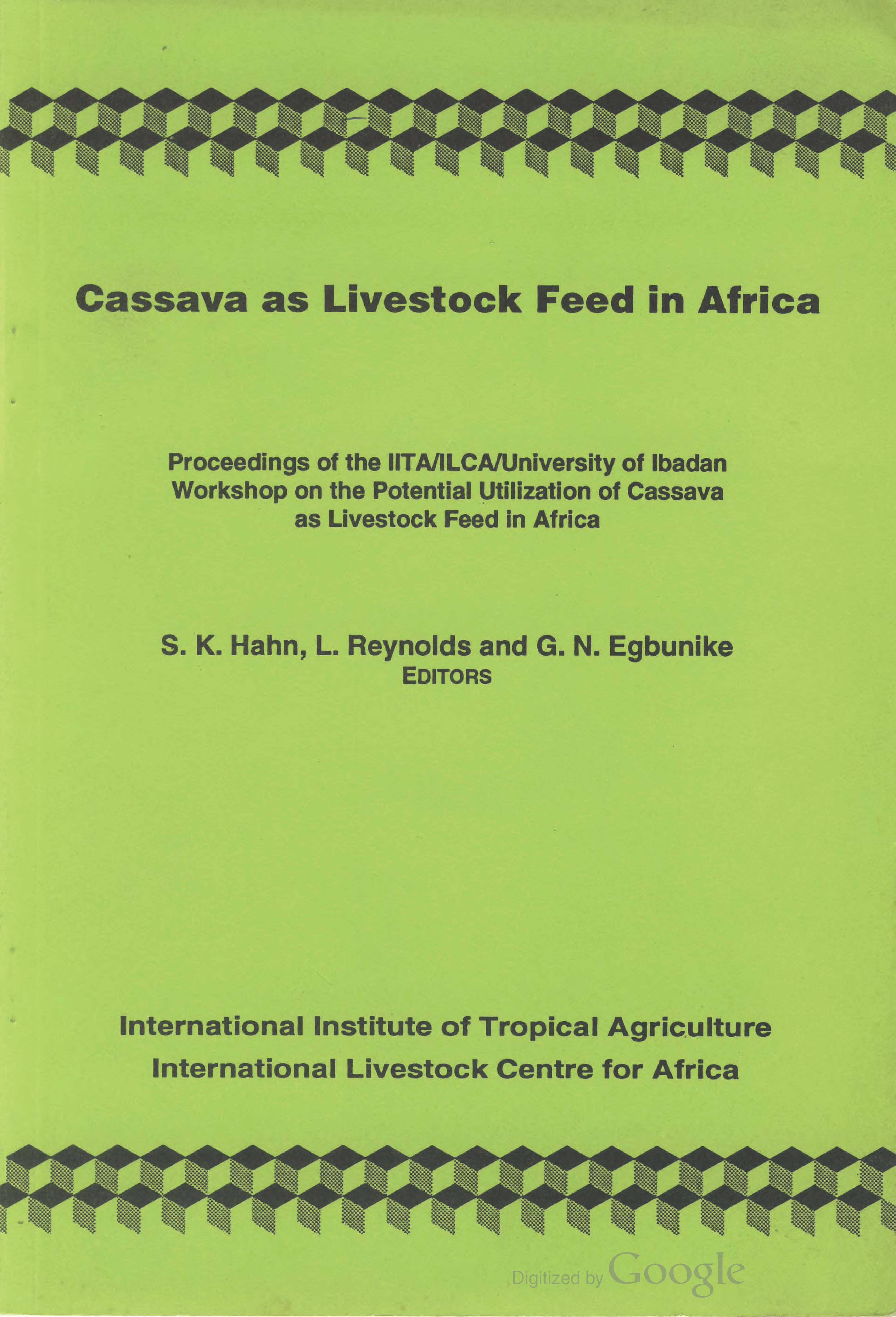Soil tillage in Africa: needs and challenges
An atlas of cassava in Africa: Historical, agroecological and demographic aspects of crop distribution
Cassava as livestock feed in Africa. Proceedings of a workshop
The aim of the workshop is to collect information on traditional African processing technologies with emphasis on cassava as a livestock feed, to review the marketing and economics of cassava by-products, to recommend strategies for future research and development on the processing and utilization of cassava as a livestock feed, and to disseminate up-to-date information on cassava.
Impact potentiel sur l'environnement
As the problems of impact assessement are rather intractable, a fairly simple dual approach is proposed. First the major components of environmental impact of current agricultural production systems in Africa (i.e. impact of cropping, livestock keeping, fuelwood and timber extraction and burning) are summarised. Second, "danger zones" in which current and future environmental impacts will be most severe and on which ILCA has focused its problem solving-research is identified.
Potential environmental impacts
As the problems of impact assessement are rather intractable, a fairly simple dual approach is proposed. First the major components of environmental impact of current agricultural production systems in Africa (i.e. impact of cropping, livestock keeping, fuelwood and timber extraction and burning) are summarised. Second, "danger zones" in which current and future environmental impacts will be most severe and on which ILCA has focused its problem solving-research is identified.
SADC/CIAT Bean Research Workshop (3, 1992, Mbabane, Swaziland). Proceedings
Sustainable livestock production in the mountain agro-ecosystem of Nepal
Report on experiences in nuclear technology transfer for agricultural production and food preservation
The report presents the benefits of nuclear technology, the central role played by the International Atomic Energy Agency (IAEA) of the United Nations in the transfer of nuclear technology applied to food and agriculture, as well as the experiences of Africa and some other developing regions in the acquisition of the technology. Some briefs are given on the discussions with scientists and technologists during missions to three African countries before concluding the report with recommendations.
The economic role of cattle in communal farming systems in Zimbabwe
This paper is concerned with understanding cattle production in Zimbabwe's Communal Lands, in so-called communal farming systems. Although commercial offtake from Zimbabwe's communal cattle herd is low, communal farmers are productive and rational in their cattle herd management. The economic rationale for cattle ownership is firstly to provide draught power and manure for tillage and secondly to provide milk and meat for local consumption, although the role of livestock in the farming system varies significantly from one part of Zimbabwe to another.
A review of mixed farming systems in the semi-arid zone of sub-Saharan Africa
The paper is divided into four chapters. The frist chapter is the introduction. Chapter two discusses the conceptualisation of the farming system with reference to the livestock component and reviews some alternative typologies that have been employed or proposed. A typological framework that is consistent with ILCA's objectives is then outlined. Chapter 3 develops a regionalisation of the semi arid zones of sub-Saharan Africa in four orders of increasing scale. The first order sub-division is between "West and North" and "East and South" geographical regions.







